In the afterlife of Béla Bartók’s music, the expiry of copyright protection for his works (2016) brought a significant change. In the years that have elapsed since, there have been a number of outstanding adaptations of his compositions, into which new life has been breathed – not surprisingly – in the world of jazz above all. In an implicit way, Bartók’s universal sound carries the feel of jazz, if lacking distinct motifs that can be grasped. His ability to react quickly, to translate raw musical material into his own language within moments, is likewise a distinctive feature of jazz. Bartók was already a base of reference in jazz when it still counted as the entertaining and light (light-hearted) music of night clubs, before the genre began to build its own idioms and structures (i.e. before it became artistic). From this perspective, Bartók made a huge contribution to the evolution of jazz, helping it to get to where it is today after a journey of some 130 years.
The development of jazz naturally does not follow a straight upward trajectory. It far more closely resembles the leafy canopy of a many-branched tree on which many different fruits – of the widest variety of tastes and aromas – all grow at once. Duke Ellington already mentioned Bartók’s music as a source of inspiration in interviews. Another known reference is the composition Giant Steps by John Coltrane, in which he applies Bartók’s axis system and chord substitution. When discussing Béla Bartók’s relationship with the greatest jazz musicians, we cannot ignore Chick Corea, who drew from the Mikrokosmos and For Children series throughout his life and worked with them until his recent death, as he explained in his daily online blog. Perhaps it was no accident that he gave the title Concerto for Trio to the piece he wrote at Müpa’s request that had its posthumous première this March. A characteristic motif of Bartók’s Concerto for Orchestra is likewise echoed on the 1963 album Quiet Nights by Gil Evans and Miles Davis; just as on the extraordinary solo piano album by perhaps the greatest jazz bassist of all time, Charlie Mingus, the opening track explicitly follows the contours of the melody of the Pe loc movement of Romanian Folk Dances.
“I reckon that some sort of intense spiritual affinity can be observed between Bartók and jazz musicians that is difficult to describe in words, despite the fact that there are numerous clear and concrete musical elements that link the two worlds,”
wrote the brilliant pianist Dániel Szabó in his essay Bartók as Jazz Inspiration. This same connection becomes obvious in the work of other Hungarian musicians such as Kálmán Oláh, András Párniczky and Csaba Palotai, and although the younger generation is now consciously engaging with Bartók, the reverse of the situation, as seen from Bartók’s perspective, is in fact equally true. Recordings on which the composer plays his own pieces on the piano are well known. Bartók had an ambivalent relationship to jazz, but for all his angularity, his playing and his works radiate determination, fire, courage and a thirst for freedom that appears as a metaphor for his musical flights of imagination. To this day, his compositions provide ample ammunition for – and, in a certain sense, clearly reflect – the complexity of modern jazz, from respect for tradition, to fixed forms of composition and innovations alike, to the spontaneous sparking of that inexplicable inner flame.
With his Bartók Project, an event that promises to be a highlight of this Bartók Spring, Uri Caine finally gets the chance to add his adaptations, inspirations and reimaginings of Bartók’s works to the great series of his life’s work that already contains music by Mahler, Wagner, Bach, Schumann, Beethoven, Mozart and Vivaldi. Looking at that roll-call, it may be hard to believe that reworking classical music is not Caine’s main speciality. An eminent figure of New York’s avant-garde, Caine is a classically trained pianist but also a radical improviser in certain musical company, who is also able to use jazz’s wonderfully uncompromising light to subtly illuminate Jewish culture. At Trafó in 2006, after the concert of his Hungarian Project, I presented Caine with an old 1,000-forint Hungarian banknote as a memento, which – we well remember – was adorned with Bartók’s likeness. He immediately recounted how he had visited Hungary in the mid-1980s and had pocketed one of these notes from that time, proudly treasuring it ever since.
Caine and his regular partners, together with the superb Hungarian musicians from Mihály Dresch’s circle joining him for this concert, embody the Bartókian ideal which the composer did not have the opportunity in his lifetime to represent; nevertheless, the ideal has continued to flourish in spirit and sprout more and more shoots since his death. In Bartók’s work, microscopically precise knowledge of the source material and strict composition are often allied to parlando-rubato, the performing freedom which became the cornerstone of jazz in the form of improvisation, albeit supported from many other directions.

The crew of Bluebeard which was debuted at the festival on 3 April
Péter Sárik takes a different approach when he translates Bartók’s only opera into plain language; and by plain, he means jazz. Sárik has adapted classical works before, but Bluebeard’s Castle, by virtue of its density and theme, is certainly no simple task. Even so, the piano trio has succeeded in preserving the values of the musical drama within gracefully elegant bounds. A looser adaptation of the work is unarguably a huge undertaking, but is not without precedent: Charlie Chaplin also managed to sensitively capture the story of Bluebeard, the roots of which reach back to the Middle Ages, in his brilliant film Monsieur Verdoux.
Gábor Köves
The interview first appeared in the 2022 edition of the Bartók Spring Magazine.



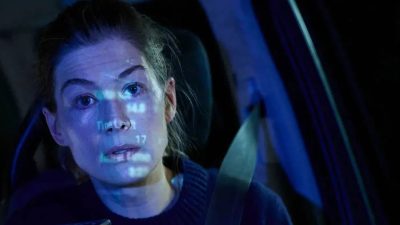
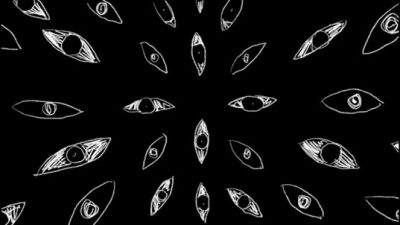


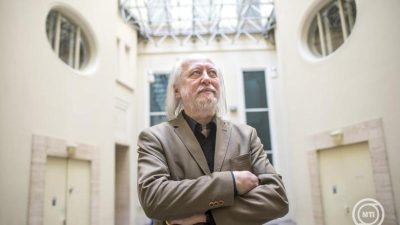





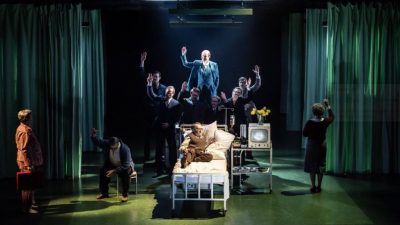
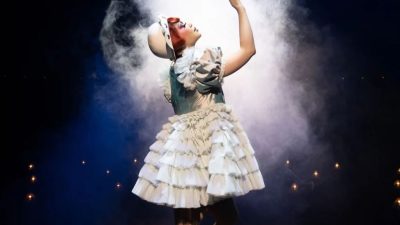
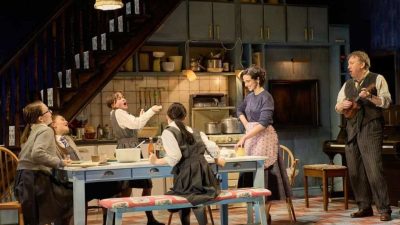







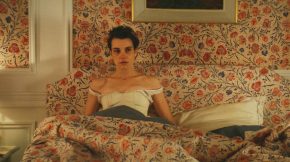

Comments